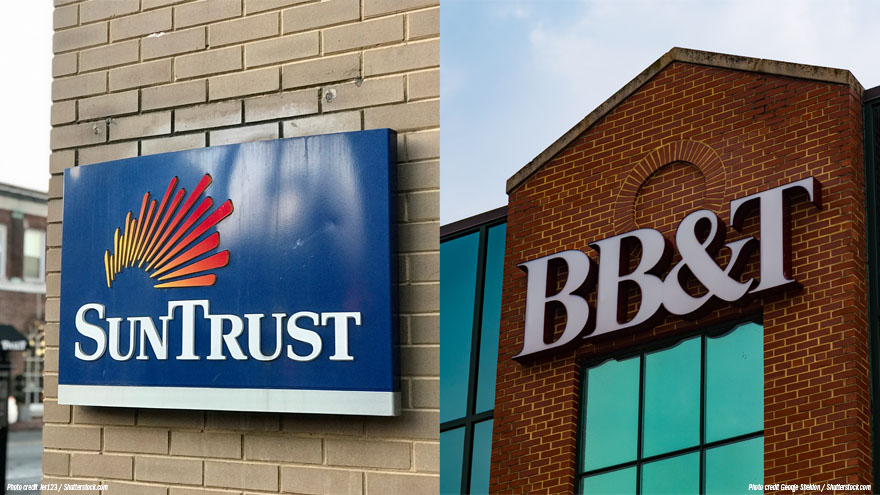Along with sharing an update involving investigations by state-level authorities in two locations, Credit Acceptance went through a series of year-end figures to detail its 2018 performance.
And to go with data about income and originations, the subprime auto finance company also got into the numbers attached to people — specifically its field workforce and growing dealer network.
The company reported that its fourth quarter consolidated net income softened a bit year-over-year, coming in at $151.9 million, or $7.79 per diluted share. That’s down from $177.1 million, or $9.10 per diluted share, during the last quarter of 2017.
However, for the year, Credit Acceptance highlighted that its consolidated net income rose to $574.0 million, or $29.39 per diluted share, up from $470.2 million, or $24.04 per diluted share, in 2017.
Helping to generate those figures is Credit Acceptance’s expanded workforce. Credit Acceptance senior vice president and treasurer Doug Busk mentioned the company had about 50 more market area managers at the close of 2018 than it did a year earlier.
“We’ve gone through a pretty rapid increase in the size of the sales force,” Credit Acceptance chief executive officer Brett Roberts told investment analysts who participated in the company’s latest quarterly conference call. “We’re probably at a period now where we’re filling in.
“I think the last time we did a sales force expansion, it was 2011,” Roberts continued. “We grew the sales force pretty rapidly over a mostly one-year period, but followed that with a second year of some growth. It took us about five years to fill in that sales force before we got productivity back to where we started. So we’re now two years and one quarter into this expansion.
“We’ve probably reached the number that’s pretty close to the target number in terms of the maximum number that we want in this expansion, and now we’re probably in that two – to three-year period where we’re trying to fill in and get productivity back to where it was,” he went on to say.
That sales force is enjoying some notable productivity as Credit Acceptance shared that it finished 2018 with 12,528 active dealers in its origination network, representing an 8.5-percent lift year-over-year. The company defines its active dealers are operators who have received funding for at least one consumer loan during the reporting period.
Those dealers worked with Credit Acceptance to book 373,329 retail installment contracts in 2018, marking a 13.6-percent rise from the 2017 figure of 328,507.
And Roberts discussed where Credit Acceptance is carving out a bigger piece of the dealer world, flipping independent dealerships that might have had their own related finance company and operated as a buy-here, pay-here store.
“That market has always been a good source of business for us. I think our program has a lot of advantages over a typical buy-here, pay-here program,” Roberts told investors. “Advantages for the consumer in particular because they can reestablish their credit on our program. We report to the credit bureaus. They can move on and get a newer, nicer vehicle at a lower interest rate, reestablish their credit, move their life in a positive direction. So there’s a lot of benefits to our program.
“The buy-here, pay-here market is large, and we’ve historically had pretty good success enrolling those former buy-here, pay-here dealers in our program, so that hasn’t changed,” he continued.
“We’re having good success signing up dealers,” Roberts added.
Compliance update
In a separate filing with the Securities and Exchange Commission, Credit Acceptance relayed updates on where the company stands on two fronts.
Back on Aug. 14, 2017, the company recapped that it received a subpoena from the Mississippi attorney general, relating to the origination and collection of non-prime installment contracts in the state.
“In connection with this inquiry, we have been informed by representatives of the attorney general’s office that it believes that the company may have engaged in unfair and deceptive acts or practices relating to the origination and collection of auto loans in violation of the Mississippi Consumer Protection Act,” company officials said in the SEC paperwork.
“We are cooperating with the inquiry and cannot predict the eventual scope, duration or outcome at this time. As a result, we are unable to estimate the reasonably possible loss or range of reasonably possible loss arising from this investigation,” they continued.
An even older matter also was included in Credit Acceptance’s SEC filing. The company first received a civil investigative demand from Massachusetts attorney general on Dec. 4, 2014 relating to the origination and collection of non-prime contract. And then on Nov. 20, 2017, the Massachusetts AG sent a second civil investigation demand to Credit Acceptance seeking updated information on its original civil investigation demand, additional information related to the company’s origination and collection of contracts and information regarding securitization activities.
“In connection with this inquiry, we were informed by representatives of the office of the attorney general that it believes that the company may have engaged in unfair and deceptive acts or practices related to the origination and collection of auto loans, which may have caused some of the company’s representations and warranties contained in securitization documents to be inaccurate,” Credit Acceptance said.
“The investigation relating to the origination, collection and securitization of non-prime auto loans and securities transactions by the office of the attorney general remains ongoing,” the company continued.
“We are cooperating with the inquiry and cannot predict the eventual scope, duration or outcome at this time,” Credit Acceptance officials went on to say. “As a result, we are unable to estimate the reasonably possible loss or range of reasonably possible loss arising from this investigation.”
Dealerships, especially ones located in the Southeast that have business relationships with SunTrust Banks and BB&T Corp., soon will be working with just one financial institution.
The banks announced on Thursday that both companies’ boards of directors have unanimously approved a definitive agreement to combine in an all-stock merger of equals valued at approximately $66 billion. According to a news release, the combined company will be the sixth-largest U.S. bank based on assets and deposits.
The banks highlighted a new corporate headquarters will be established in Charlotte, N.C., including an innovation and technology center to drive digital transformation. In the current home markets for both companies, the combined company said it will maintain the community banking center in Winston-Salem, N.C., and the wholesale banking center in Atlanta.
“This continued strong presence is also supported by the combined company’s commitment to increase the respective banks’ current levels of community investment,” officials said.
The merger is expected to close in the fourth quarter of 2019, subject to satisfaction of customary closing conditions, including receipt of customary regulatory approvals and approval by the shareholders of each company.
In a reflection of the equal contribution both banks bring to the new institution, officials explained the combined company will operate under a new name and brand, which will be determined prior to closing. The combined company’s board of directors and executive management team will be evenly split between the two institutions.
Kelly King, chairman and chief executive officer of BB&T and its bank subsidiary, will serve as chairman and chief executive officer of the combined company and its bank subsidiary until Sept. 12, 2021, after which time he will serve as executive chairman of both entities until March 12, 2022. King will continue to serve on the board of directors of the combined company until the end of 2023.
William Rogers Jr., chairman and chief executive officer of SunTrust, will serve as president and chief operating officer of the combined company and its bank subsidiary until Sept. 12, 2021, at which time he will become chief executive officer of the combined company and its bank subsidiary. He will also hold a seat on the combined company’s board of directors through his position as president and chief operating officer and then chief executive officer.
On March 12, 2022, Rogers will also become chairman and chief executive officer of the combined company and its bank subsidiary.
Upon the closing of the transaction, the board of directors of the combined company will consist of members equally split between BB&T and SunTrust’s current directors. David Ratcliffe, current lead director of SunTrust, will serve as lead director of the combined company until March 12, 2022, after which the lead director will be a legacy BB&T director.
The combined company’s executive management team will be comprised equally from SunTrust and BB&T. They include chief risk officer Clarke Starnes and chief financial officer Daryl Bible along with:
—Chris Henson
—Allison Dukes
—Brant Standridge
—David Weaver
—Dontá Wilson
—Ellen Fitzsimmons
—Ellen Koebler
—Hugh (Beau) Cummins
—Joseph Thompson
—Scott Case
“This is a true merger of equals, combining the best of both companies to create the premier financial institution of the future,” King said. “It’s an extraordinarily attractive financial proposition that provides the scale needed to compete and win in the rapidly evolving world of financial services. Together with Bill’s leadership and our new SunTrust teammates, we’re going to bring the best of both companies forward to serve our clients and communities.”
Rogers added, “By bringing together these two mission- and purpose-driven institutions, we will accelerate our capacity to invest in transformational technologies for our clients. Our shared culture embraces the disruption of technology and we will take this innovative mindset to expand our leadership in the next chapter of these historic brands.
“With our geographic position, enhanced scale and leading financial profile, these two companies will achieve substantially more for clients, teammates, associates, communities and shareholders than we could alone,” Rogers went on to say. “I have tremendous respect for Kelly, his leadership team and the BB&T associates. We will leverage our respective strengths as we focus together on the future.”
Dumb question: Who wants to make more money? We all do, of course. But is opening your business to more credit-challenged consumers worth chasing more delinquencies and repos? Good question; and one that becomes problematic if you don’t take the right steps to minimize your risk. But, can I reduce risk and make more money without spending more? Great question.
Traditionally, the industry’s approach to managing risk involves manual processes that are tedious and time-consuming. Maintaining and following up on exhaustive consumer records of everything — phone numbers, addresses, employment — requires time and manpower you simply don’t have. As a result, taking on the operational cost of expanding your subprime business could be a nonstarter. One look at the consumer contact and employment statistics for this market segment underscores the burden.
The information chase
According to the FactorTrust Underbanked Index: Consumer Stability report, a borrower who has changed his or her mobile phone number four or more times over a 90-day period has a 77 percent higher default risk than a borrower who has done so only twice. Additionally, a borrower who has had three or more ZIP codes over a 90-day period has a 63 percent higher default risk than a borrower with one ZIP code. Further, among the underbanked, 16 percent applied with a different employer within 30 days, 20 percent within 60 days, 23 percent within 120 days and 34 percent within one year.
Remember the Wayne Gretzky quote, “I skate to where the puck is going to be, not where it has been?” Keeping up with subprime consumers is like trying to predict where that puck will be, which is nearly impossible without the tools to help.
If cars could talk
There is an option for managing risk in the subprime market that supplements a dealer’s ability to vet these consumers: gathering vehicle intelligence. With advances in aftermarket telematics and driver analytics, the latest technology can provide customer insights far beyond the standard vehicle location data associated with early GPS systems.
When it launched onto the buy-here, pay-here scene more than 15 years ago, GPS made it much easier to find a vehicle for repo. Over the years, the technology has evolved to look at location data over time, with the ability to predict where a vehicle will likely be at any time of the day or night with incredible accuracy. For example, the technology can now identify a change of job or home address through deviations in driving patterns. Let’s face it, unless they’re the James Bond type, most people have a set daily routine bouncing back and forth between home and work. Modern GPS solutions can detect major life changes by analyzing location data in relation to time of day, day of week, and pattern frequency.
Similarly, these same algorithms can automate and expedite loan stipulations that typically require hours of calling to verify addresses and workplace information. It’s also useful in preparing agents for repossession, when needed, to better target the right place and time for recovery. Accurately predicting vehicle location under specific circumstances (such as during Monday night football) leads to easier, less costly and less risky recoveries.
Smart solutions combine vehicle intelligence with proactive alerts to further reduce operational costs. Cars that aren’t driving, aren’t paying, so automated alerts for “non-driving” scenarios, such as vehicles impounded to tow lots, abandoned vehicles, and battery disconnects save dealers thousands of dollars each year. The ability to set geo-fences — virtual boundaries around key locations like tow lots, state borders and ports of entry — can help you keep your finger on the pulse of your assets without any effort on your part.
As with any technology purchase, reliability should be one of the main evaluation criteria. Leading GPS providers have always-on platforms (ask about uptime and availability rates) and wide-reaching network support that keeps vehicles connected no matter where they roam. You should ask any provider you’re vetting about the quality and quantity of the data its devices track. It’s no longer enough to monitor vehicle location every 24 hours, as was the industry standard. You need near real-time visibility that can only come from telematics devices that report data at 5-minute intervals or less, giving you the confidence to act when action is warranted.
Finally, the unique value of modern telematics is its ability to drive increased payments. Gone are the days when “starter interrupt” was the only way to get the attention of a delinquent customer. With 85 percent of the U.S. population carrying smartphones, the key to customer engagement is mobile. If the GPS technology you’re considering (or currently using) doesn’t offer a mobile component that opens up a soft-touch but high visibility communication channel between you and your customer, keep shopping.
Ask and ye shall receive
To thrive and survive in this hyper-competitive business, dealers must look beyond their current constraints in servicing this segment. Advanced vehicle intelligence offers not only a safer path to do business with the subprime consumer, but also the operational efficiency necessary to improve the bottom line. If you’re thinking about GPS as a recovery tool, think again, and remember what your teacher said back in grade school: “there are no dumb questions” — except the ones you don’t ask your suppliers.
Brian Deeley is a director of product management at Spireon. He can be reached at [email protected].
ID Analytics recently rolled out a tool specifically tailored for finance companies looking to buy a little deeper while still having solid footing with its underwriting.
The Symantec company and consumer risk management provider recently announced Credit Optics Full Spectrum Auto, a new version of its credit score designed specifically to address the needs of the automotive financing industry by providing companies with insights that can help them extend even more compelling credit offers to applicants across the credit spectrum.
The company explained Credit Optics Full Spectrum Auto can distinguish itself from more limited alternative credit solutions by delivering a more complete understanding of credit worthiness on applicants from no-hits to thick-files, subprime to super-prime, helping finance companies to extend more competitive offers and ultimately book more retail installment contracts.
To accomplish this goal, ID Analytics said that it leverages a powerful and uncorrelated assessment of consumer credit risk using event and performance data found in ID Analytics’ ID Network, one of the nation’s largest networks of cross-industry consumer behavioral data. The ID Network can provide deeper insights from data not typically analyzed in traditional credit scores, including transaction data from wireless, cable and utility accounts; online marketplace, payday and subprime lending and other credit-relevant alternative data sources.
To illustrate how a score that looks at both traditional and alternative credit data can reveal a substantial difference in risk within a bureau score band, ID Analytics analyzed a group of prime auto finance applicants with traditional credit scores of 750 and higher. When these applicants were scored using Credit Optics Full Spectrum Auto, the company discovered a significant separation of risk among what are considered excellent credit applicants — with the riskiest 20 percent being more than nine times higher than the lowest risk consumers within the super-prime score band (applicants with 750 scores).
In a rigorous regulatory environment, ID Analytics said credit risk solutions often struggle to meet the evolving demands of financial regulators without compromising performance. ID Analytics shared that it has spent years innovating new techniques designed to help lenders meet their regulatory requirements while minimizing trade-offs on score performance.
“In an increasingly competitive market, Credit Optics Full Spectrum Auto helps lenders gain the insights needed to stay ahead of the competition,” said Ajay Nigam, chief executive officer of ID Analytics.
“Conventional credit scores typically provide only a partial view of consumer behavior and its associated risk,” Nigam continued. “By combining this information with alternative data, automotive lenders can enhance their underwriting strategies with the goals of extending more competitive loan terms to consumers across the credit spectrum, and increasing book-to-look ratios while minimizing their exposure to risk.”
ID Analytics’ Credit Optics Full Spectrum Auto is available today. Interested finance companies can send a message to [email protected] or go to www.idanalytics.com/industries/automotive-lending.
MaximTrak Technologies announced on Tuesday a preferred partnership with Allstate Dealer Services to provide digital F&I solutions for agents and their dealer customers retailing Allstate’s aftermarket products.
MaximTrak highlighted that its platform seamlessly can integrate into auto dealers’ business processes, providing solutions that can help make Allstate Dealer Services’ agents and dealers more successful and profitable.
These solutions include MaximTrak’s FLITE platform, an interactive digital showroom experience, and MaximTrak’s F&I menu system, known as MenuTrak. The platform can help dealers deliver seamless, efficient and consistent aftermarket product presentations that save time, promote trust and engage customers.
Allstate Dealer Services national sales director Thomas Hackett said, “MaximTrak’s technology makes the F&I experience more transparent and helps consumers understand the products and their benefits.
“Allstate’s goal is to ensure consumers have the best vehicle protection products, and our partnership with MaximTrak is a great step towards this goal,” Hackett continued.
As a RouteOne company, MaximTrak also can bring extensive additional sales leverage to Allstate Dealer Services’ customers, including eContracting. RouteOne has booked more than 11 million eContracts to date and has more than 60 finance sources in its rapidly growing eContracting customer base.
Other MaximTrak digital solutions available through this preferred partnership include:
— MenuTrak: Interactive digital menus, sales aids, videos and compliance management.
— ServiceTrak: Menu sales, e-rating and electronic contracting tools for finance and service lane.
— Dashboards: Customizable reporting tool.
—FLITE: Interactive touch technology, smart survey, decisioning engine, risk profile and intelligent product recommendations solution.
“Since we launched FLITE, system usage has rapidly grown along with meaningful results for dealers and their customers,” said Jim Maxim Jr., president of MaximTrak.
“Dealers who retail Allstate Dealer Services’ products will now benefit from the power of FLITE and the MaximTrak global F&I platform to drive more profit from their business, while giving their customers a more engaging and transparent experience,” Maxim went on to say.
In a continued effort to provide a most compliant financing solution, Vergent Loan Management Software recently announced a partnership with Carleton for consumer loan calculation support.
Vergent has been providing financial management software since 2006. Formerly eSoftware Solutions, the company offers a web-based loan management software solution that encompasses loan origination, loan servicing, marketing, reporting and accounting exports, along with ancillary services to enhance and streamline the lending process.
Its latest web-based lending solution interfaces with CarletonCalcs that’s geared to ensure payments and disclosures are accurate and compliant.
According to Vergent chief operating officer Terry Freeze, “Our company has experienced tremendous customer growth and we recognized a need to ensure our lending calculations are compliant with all federal and state regulations.
“Strong compliance is so important in today’s litigious lending environment which is why partnering with a very experienced company like Carleton for additional compliance support made a lot of sense,” Freez continued.
Carleton president and chief operating officer Matt Ruszkowski added, “Vergent recognized the importance of having compliance alignment between the contract language and their loan origination and loan servicing computations.
“Our 50 years of lending calculation experience and demonstrated lender and dealer support is why Vergent partnered with Carleton,” Ruszkowski went on to say. “We are excited to be part of the Vergent team as we are both committed to providing the highest quality level of service in each of our areas of expertise.”
The newest financing data from Edmunds and Kelley Blue Book reinforced how the newly installed chairman of the National Automobile Dealers Association didn’t mince words as the auto industry gathered for annual festivities in San Francisco.
“Affordability is an issue. All of the new technology, safety features and fuel economy add costs. That’s a real concern,” current NADA chair Charlie Gilchrist told fellow dealers and finance company executives who assembled for the closing day of the Vehicle Finance Conference hosted by the American Financial Services Association.
On Friday, Edmunds arrived with information to illustrate just how much of a potential issue affordability is becoming for possible buyers walking into your showroom, scanning online inventory or completing financing applications.
Edmunds reported that tightening credit conditions and rising vehicle prices continued to squeeze consumers in January. Due in part to an evaporation of zero percent financing deals, the average annual percentage rate (APR) on new financed vehicles hit the second highest point in 10 years in January, averaging 6.19 percent.
The newest reading is up from 4.99 percent last January and 4.22 percent five years ago.
Additionally, the average transaction price of a new vehicle is expected to hit a near-record high of $37,150 in January, and zero percent financing offers dropped to their lowest level since 2006.
The analysts at Kelley Blue Book reported similar figures. They indicated the estimated average transaction price for a light vehicle in the United States was $37,149 in January, up 4.2 percent or $1,481 from January of last year.
“Car shoppers who are returning to the market for the first time in a few years could be in for a big shock,” said Jessica Caldwell, Edmunds’ executive director of industry analysis. “Vehicle prices and interest rates are so high right now that consumers are facing the very real possibility of spending thousands of dollars more on a new vehicle than they did last time they purchased a new car.”
And depending on which new model they choose, that sticker and financing shock could be intense.
“There are several factors contributing to strong average transaction prices, which climbed 4 percent year-over-year,” said Tim Fleming, analyst for Kelley Blue Book.
“First, Tesla has approached BMW and Mercedes-Benz U.S. sales numbers in recent months with even stronger transaction prices,” Fleming said. “Also, full-size trucks are more popular than they have been for over a decade, and the new Chevrolet Silverado, GMC Sierra and Ram 1500 pickups helped drive prices up.”
Although Edmunds experts noted that sales in January showed relative strength and the overall impact of the polar vortex across the Midwest was minimal, analysts caution that sales are likely to take a turn through the rest of 2019.
“Although January saw a slight lift, higher fleet sales give the false appearance of a more robust sales month,” Caldwell said. “If the economy starts to slip for any reason, we could see significant repercussions for the overall market.”
Encouraging employment news
At least for now, it appears consumers will need vehicles to get to their employment while gaining income to handle those financing commitments. The trend stems from the U.S. Labor Department’s January Jobs Report also released on Friday.
U.S. Secretary of Labor Alexander Acosta said January’s Job Report demonstrated “the strength of the American economy” as the January Employment Situation report indicated 304,000 jobs were added. Acosta said private sector job creation continued to surge despite the partial government shutdown.
Acosta also noted significant growth in the mining, construction, and transportation and warehousing sectors led the report.
Officials pointed out the unemployment rate ticked up by 0.1 percentage point to 4.0 percent, largely as a result of the temporary lapse in federal government funding. However, January represented the 11th consecutive month that the unemployment rate has been at or below 4.0 percent.
The federal agency went on to mention average hourly earnings rose by 3.2 percent, marking the sixth straight month in which year-over-year hourly earnings have been growing at or above 3 percent. Average weekly earnings rose at an even more robust 3.5 percent year-over-year.
“Another key indicator in the report pointed to the increase of the labor force participation rate to 63.2 percent, the highest rate since August 2013,” Acosta said.
“As the jobs and employment data normalizes over the coming months, we are confident the nation’s economy will continue to build on the strength seen in 2018 and the first report of 2019,” he added.
The latest employment data also impressed Curt Long, who is chief economist at the National Association of Federally-Insured Credit Unions (NAFCU).
“The January jobs report showed no signs that hiring is slowing down,” Long said. “The slight uptick in the unemployment rate owes to the highest rate of labor force participation in over five years.
“Wages growth slowed, which suggests there is still room to run. It also supports the Fed’s patient stance on rates, as inflationary pressures remain muted,” Long added.
Resilient auto industry
Brad Korner, general manager for Cox Automotive Rates and Incentives, described how OEMs didn't lean on a crutch of the past to keep metal rolling over the curb.
"Automakers in January continued a relatively tempered, measured approach to incentives. Our team was tracking fewer programs in the month, notably fewer at Ford, which uncharacteristically held steady and offered fewer-than-normal regional programs," Korner said.
"In January, lease pull-aheads remained popular and there was continued healthy spending on full-size pickups trucks, notably from Ford and GM, who both have money and programs in place on 2019 models to compete with the new RAM model which is offering less incentives due to a high consumer demand," he continued.
"The incentive business is experiencing a transition away from incentive promotion and toward a focus on monthly payments for both finance and lease deals. This is likely to combat the affordability issues and help consumer with budgeting for a new vehicle," Korner went on to say.
"Also, as more digital retailing solutions are offered, consumers are finding more transparency in the deal, with less emphasis on the amount of a rebate or incentive and more emphasis on the resulting monthly payment," he added.
No matter what headwinds might appear in terms of elements like affordability — especially if the Federal Reserve continues to adjust interest rates — Gilchrist is confident dealerships will still be turning used and new metal throughout the year. Along with being NADA chair, he is also president of Gilchrist Automotive, which includes Buick-Chevrolet-GMC, Chrysler-Dodge-Jeep-Ram, Ford, Nissan and Volkswagen franchises at five Texas dealership locations in the Dallas-Fort Worth area.
“We respond well to our local markets,” Gilchrist told the auto finance community during AFSA’s event. “This is a fun business, but it’s an intense business. We have to smile every day and keep our attitude right.”
New-Car Finance Data
|
|
January 2019
|
January 2018
|
January 2014
|
|
Term
|
69.1
|
69.2
|
65.9
|
|
Monthly Payment
|
$551
|
$524
|
$476
|
|
Amount Financed
|
$31,707
|
$31,236
|
$27,573
|
|
APR
|
6.19
|
4.99
|
4.22
|
|
Down Payment
|
$4,191
|
$3,914
|
$3,628
|
Used-Car Finance Data
|
|
January 2019
|
January 2018
|
January 2014
|
|
Term
|
67.2
|
66.9
|
64.4
|
|
Monthly Payment
|
$407
|
$384
|
$363
|
|
Amount Financed
|
$21,763
|
$21,084
|
$19,441
|
|
APR
|
8.88
|
7.83
|
7.58
|
|
Down Payment
|
$2,614
|
$2,473
|
$2,200
|
Source: Edmunds
Darwin Automotive wants finance office products to be as easy for used-vehicle buyers to purchase as their favorite items on Amazon.
The F&I software provider recently announced the release of “Buy it Now” functionality as an addition to its Darwin Online digital retailing application, creating what the company believes is a “true Amazon-like” checkout experience for vehicle buyers anywhere in the United States.
Darwin Automotive explained that it has harnessed its patented technology to enable customers to seamlessly purchase a vehicle from the comfort of their own home or workplace. Darwin’s “Buy it Now” technology can allow the consumer to pay for 100 percent of the vehicle online and to electronically sign all the required documents in one single signing ceremony without having to leave their home or workplace, including finance and insurance documents.
According to Darwin Automotive chief executive officer Phillip Battista, no other company has provided this functionality in the marketplace to date.
“We view this as a huge opportunity for all our auto dealer clients, especially with pre-owned vehicles, where the customer understands the uniqueness of the vehicle they are purchasing,” Battista said.
“Most dealerships know that 20 percent of their business is cash transactions,” he continued. “Cash customers represent five times the number of new-car customers that are willing to do an entire transaction electronically, so why not provide them with the convenience of an electronic transaction inclusive of F&I products?”
Darwin currently operates in all 50 states with more than 3,600 dealerships nationwide using its F&I software.
“Having clients which include Hertz Automotive, with 86 retail locations, Vroom and Texas Cars Direct, (two of the largest used-car retailers in the world) has provided us with great insight into the pre-owned market and what customers want,” Battista said.
“Darwin is uniquely positioned to offer these customers what they truly desire, which is ease of doing business while being in control of the transaction,” he went on to say. “Darwin inserts its predictive analytic recommendation engine for F&I products to ensure the transaction is a profitable one.”
For more information or to schedule a product demonstration, call (732) 781-9010 or visit www.darwinautomotive.com.
Volvo picks Darwin as preferred partner
In other company news arriving before January closed, Volvo Car Financial Services selected Darwin Automotive as a preferred partner offering digital F&I options to Volvo franchised dealers in the United States.
The products offered via the Darwin platform assist retailers in adding value to customers at any time during a purchase.
The digitalization of F&I options allows Volvo to offer personalized opportunities to enhance their purchase, improving the customer experience,” said Tony Nicolosi, president and chief executive officer of Volvo Car Financial Services. “The digital nature of this process follows our sustainability mission of reducing the use of paper.”
Dealers will have the opportunity to use the Darwin platform starting on Feb. 1.
“We are thrilled to have Volvo Car Financial Services as a preferred partner because they truly understand the importance of an integrated shopping experience,” Battista said.
“This partnership helps retailers educate customers about the value of F&I protection, placing Volvo at the front of the digital retailing game,” Battista added.
National Auto Care (NAC) grew its board of directors to five by adding another member.
The provider of F&I products nationwide recently announced the appointment of Michael Boyle to its board of directors. Boyle is the fifth member to join NAC’s board of directors, which already includes NAC chief executive officer Tony Wanderon, Trevor Rich and Steve Pearson of Lovell Minnick Partners, as well as Steve Verney, formerly of NAC.
Boyle currently serves as a managing partner for Ecliptic Capital and Optimal Symmetry, both based in Austin, Texas. He is also an adviser for multiple companies in the finance, insurance and automotive industries and has previously served on various boards for companies with an emphasis in technology.
“As National Auto Care looks to grow and continue to expand through innovation, we are thrilled to have Mike join our board,” Wanderon said.
“His knowledge and experience in the marketplace in the technology space as well as his overall business acumen will be invaluable to us as we look to offer more cutting-edge products and programs to our agents and clients for years to come,” Wanderon continued.
NAC announced its acquisition by Lovell Minnick Partners (LMP) last August. The parent company plans to help NAC pursue acquisitions that fit the needs of its clients and will help grow the business strategically.
“Adding Mike Boyle to the board of directors further demonstrates the company’s commitment to maintaining its leading technology position in the market,” said Rich, who is a partner with Lovell Minnick Partners.
“Mike will be influential in assisting the company with its technology strategy over the coming years,” Rich went on to say.
In addition to his current roles, Boyle served as a senior vice president at Aflac and Allstate Financial and was director of technology for Merrill Lynch.
Interest rates continue to increase the cost of buying a vehicle. Dealers and finance companies are well aware of concerns about affordability, consumer access to credit and softening new-vehicle sales.
Because of that, dealers and finance companies are exploring new methods to make the auto financing process more efficient to save time and money. Working to help ease concerns with that process, DealerTrack notes that the payoff and title release process is a main area in which money might slip through the cracks.
The company highlighted that its Accelerated Title product can provide the ability to reduce payoff and title release from what it says is an industry standard of 12 to 18 or more days to as few as four to six days.
Finance companies spend approximately $20 to $25 per title released on back of the title lifecycle labor costs such as overnight postage, short-pay write-offs and over-pay refunds, according to DealerTrack data. All of those costs mean a finance company that releases 40,000 annual titles incurs almost $1 million in costs. The company says outdated tools, manual procedures and slow workflows are the reason for those costs. How can lenders and dealers overcome those costs? By working closely with their third-party technology providers to build partnerships, make more of their processes digital and make workflows connect better for greater accuracy and speed.
Obtaining a payoff quote, handwriting and mailing checks overnight, and then waiting for delivery of title is a time-intensive process. The undesirable result? It can often mean incorrect payoffs, delays in title receipt and high processing costs. DealerTrack notes that its Accelerated Title product can effectively speed up the funding “lifecycle” by as much as 70 percent.
“There is a lot of value to be gained by improving vehicle payoff and title release process,” Cheryl Miller, senior vice president and general manager for Dealertrack F&I and Registration and Titling Solutions, said in a news release. “Through Dealertrack Accelerated Title, we’re working to cut inefficiencies and deliver an integrated workflow between dealer and lender that increases transparency and consistency for a faster, streamlined title release process.”
Dealertrack notes that Accelerated Title is one of its lender products that help lenders improve efficiency while strengthening dealer relationships. Accelerated Title features more than 40 lenders, which the company notes gives dealers more control over their transactions.
Dealertrack states that the fully electronic process can provide finance companies with title tracking and reporting 24 hours per day, seven days a week.












